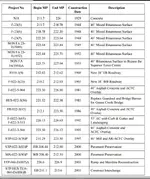I found something interesting.
Wayne posted this article yesterday and I've seen it before. It contains a clue too the location of the Stone Map dig.
The McGee article in Frontier Times has had me puzzled for a while. I searched the area but the photo in the article didn't match the terrain. It matched the bridge but not the Terrain.
The back ground mountain range didn't match the road on the other side of the bridge. The road after the bridge goes right in the photo and the real road goes left. It never made any sense when I looked there the article photo didn't match and it had me wondering around where I found the holes Frank and Ryan found.
Well I think I may have just found the answer to it.
Take a look at this:
View attachment 1168199 View attachment 1168190 View attachment 1168191
It seems McGee mirrored the image Horizontally . Now since he went to all that trouble mirroring the image could the directions and locations be mirrored as well?
This may be a clue.
Burrow or Barrow pits are small construction pits used for the purpose of local fill issues while building or construction takes place. Frank and Ryan found the three barrow pits or dig pits associated with Travis's map of where he found them. Or did they?
Was McGee giving us a clue to mirror the instructions to the location where Travis found the maps?
I think I might know the true area where they were found and now it all makes perfect sense!
By the way, the photos are from GE and did solve this issue.





